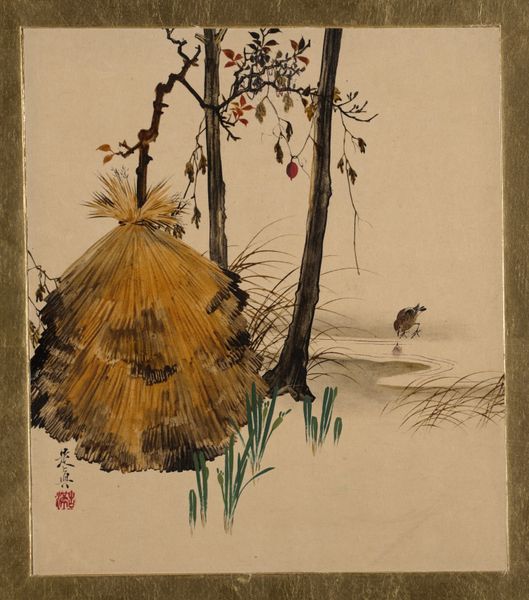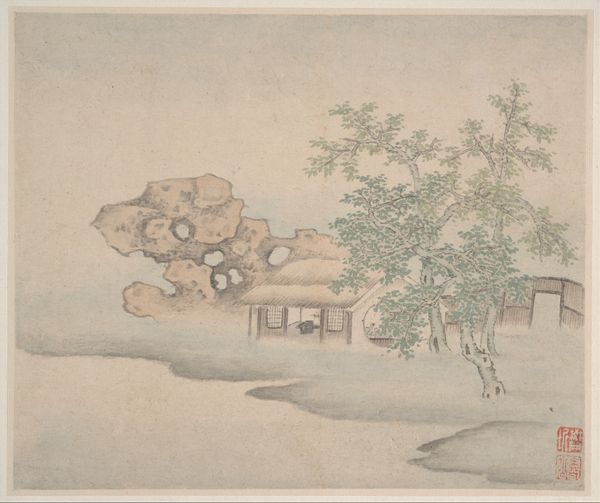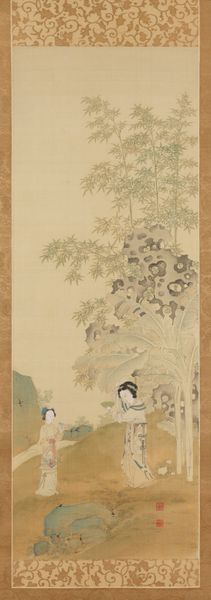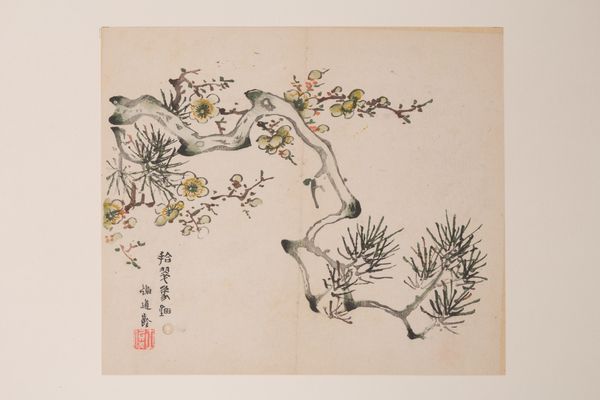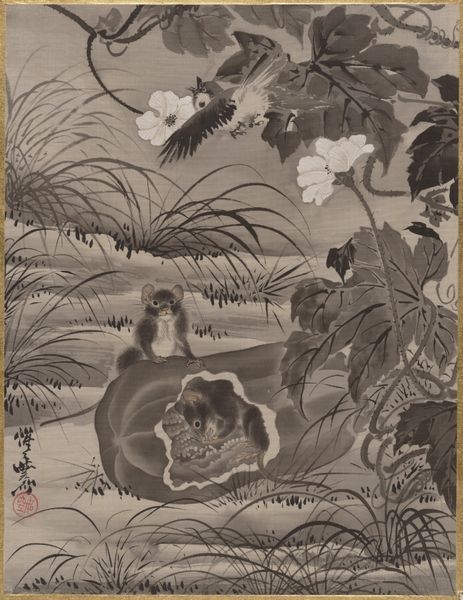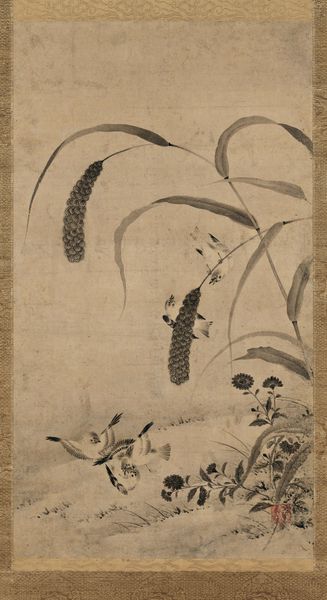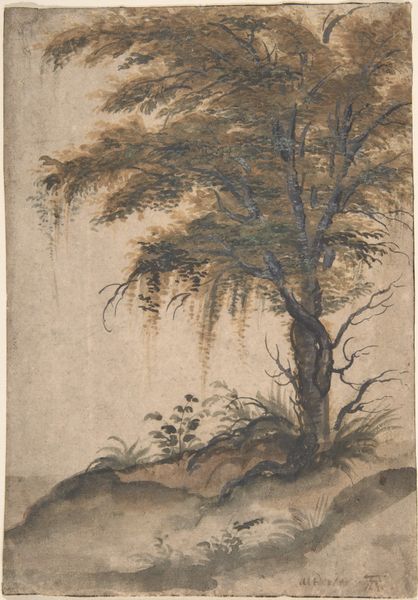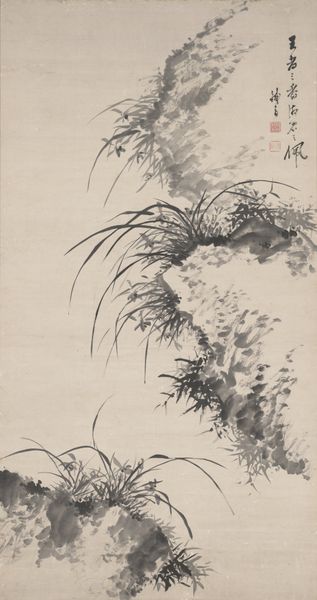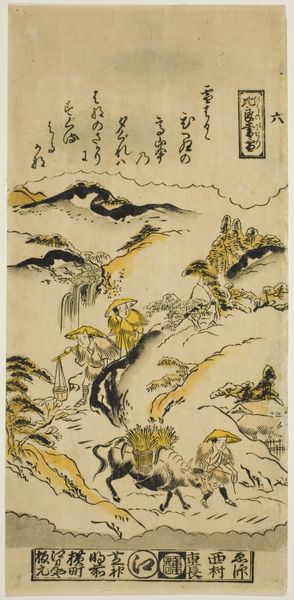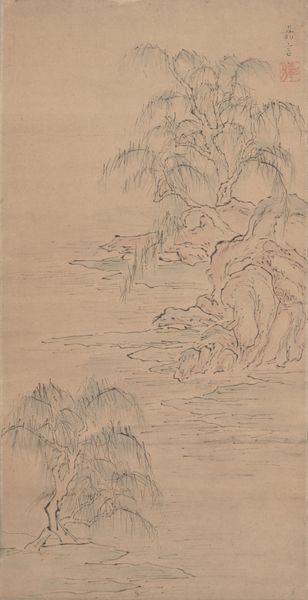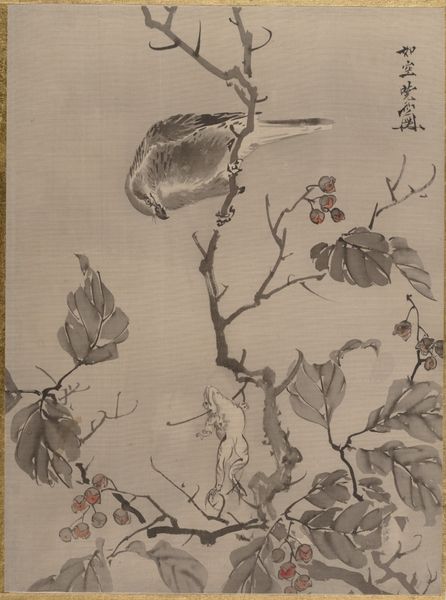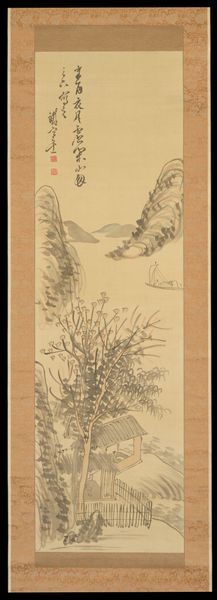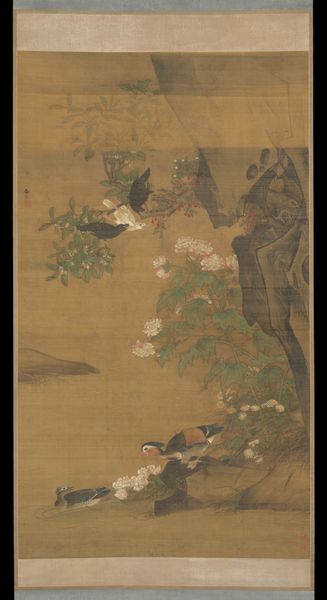
Lacquer Paintings of Various Subjects: Stack of Rice and Dragonflies 1882
0:00
0:00
Dimensions: 7 1/2 x 6 1/2 in. (19.1 x 16.5 cm)
Copyright: Public Domain
Editor: Here we have Shibata Zeshin's "Stack of Rice and Dragonflies," a watercolor painting from 1882. It strikes me as a scene of quiet abundance, all soft browns and tans. What catches your eye in this image? Curator: The dragonflies immediately speak to me. Consider their symbolism – transformation, illusion, adaptability. Notice how they are not merely decorative, but intrinsic to the composition, perched on the rice stalks, seemingly guarding the harvest. What emotions do you feel when considering such abundance is paired with the temporality of life? Editor: It's true, they do add a sense of lively impermanence. The hanging implements look like charms to keep evil away. Does the stack of rice symbolize a specific cultural belief or ideal beyond just sustenance? Curator: Absolutely. Rice in Japanese culture is profoundly symbolic, representing wealth, prosperity, and even divinity. The placement of the rice stacks, almost reverentially posed, emphasizes this. Notice, too, the detail Zeshin uses – the individual straws, each distinct, but forming a unified whole. It speaks to a connection between the individual and the community. Editor: The almost monochromatic palette lends the whole scene a serene, timeless quality, doesn't it? Curator: Indeed. It is less about pure representation, and more about evoking a sense of harmony with nature and acceptance of the continuous cycle of change. The painting is a form of cultural memory. Are we always aware of that relationship in our current time? Editor: Probably not, but it's something to consider now, thanks to Zeshin. It is amazing to observe how rich in symbolism this simple watercolor can be. Curator: Precisely, this piece really reveals the unseen dialogues occurring beneath surface appearances!
Comments
No comments
Be the first to comment and join the conversation on the ultimate creative platform.
